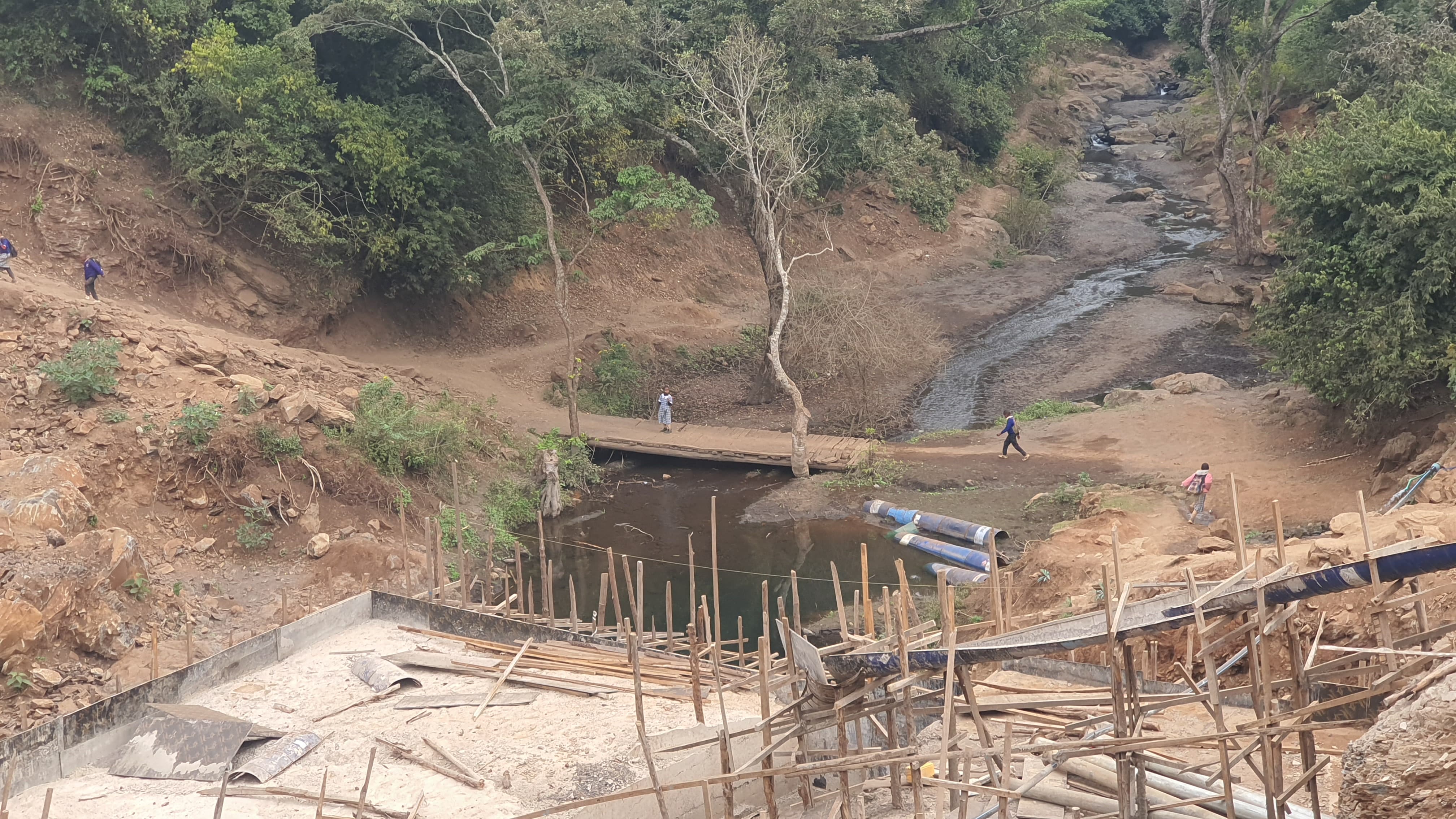

School-going children crossing the controversial water project in Ngama 51 in Loitotok/Gilbert Koech.
Residents of Ngama 51 in Loitoktok, Kajiado county, have
raised concerns over a government-backed water dam project, accusing authorities
of sidelining the community by failing to conduct public participation and
flouting environmental regulations.
The proposed dam, expected to hold 70,000 cubic metres of
water and feature a 17-metre-high concrete wall, is being implemented along the
Nalemuru River.
While officials claim the project has received the necessary
approvals, the Water Resources Authority disputes that claim, saying no
Environmental Impact Assessment has been conducted.
EIAs are crucial for assessing a project’s potential
environmental effects and recommending mitigation measures. Without it,
residents fear irreversible damage to their land, water access and livelihoods.
Julius Mzee, a farmer whose land borders the project site,
says the construction has already destroyed a significant portion of his farm.
“Three-quarters of an acre of my land has been damaged.
There’s no signage to inform people about the project—no indication of who is
behind it or when it will end,” Mzee said.
He said the dam is a national government initiative, yet the
legally required public participation process was never carried out.
“We are not against development. We just want it to follow
the law. But every time we raise our concerns, no one listens,” he said.
Mzee claims heavy machinery moved into his land without
notice, destroying crops like maize.
Other community members are also affected. Joseph Kapaito
said the project has disrupted access to the river where cattle drink and
children have historically crossed on their way to school.
“Now, parents have to wake up at 3 am to help their children
cross the river. It’s dangerous and stressful,” Kapaito said.
Geoffrey Mpoke, another resident, said even the sick are
struggling to get to health facilities, as their regular routes have been
blocked by the construction.
A resident engineer involved in the project, who declined to
be named, claimed the dam design allows for environmental flow. He said once
full, excess water will flow through a spillway.
But WRA's Basin area coordinator for the Athi region, John
Munyao, challenged the project’s legality.
“Do you have authorisation to build this? Do you have an
environmental impact assessment? Without these, you’re operating illegally,”
Munyao said during a recent visit.
While the engineer insisted that a request for authorisation
had been made, WRA confirmed no formal application had been submitted through
the required sub-regional office. As a result, WRA has issued a stop order on
the project.
“When you're doing an illegal structure and a stop order is
issued, you’re required to halt work immediately and comply,” Munyao said.
The controversy surrounding the dam comes as the area
featured prominently in the just-concluded Journey of Water 2025 campaign—an
environmental awareness initiative led by WWF-Kenya.
This year’s campaign highlighted the significance of two key
transboundary rivers, Kimengelia in Tanzania and Noolturesh in Kenya, both
originating from the slopes of Mount Kilimanjaro and collectively supporting
over 227,000 people.
Under the theme ‘Rivers without borders: One source, shared
future’, the campaign emphasised the need for cross-border cooperation in
managing water resources and addressing climate resilience.
Backed by the Netherlands Embassy, BMZ, and other partners,
the journey of water initiative engages communities through river walks, town
hall meetings, and collaborative resolutions aimed at protecting vital
catchment areas.
This year’s event concluded with a joint commitment from
stakeholders in both Kenya and Tanzania to strengthen water resource
management.
As the campaign promotes environmental stewardship and transparency, Ngama 51 residents hope the same principles will be applied to the dam project unfolding in their backyard.









.jpg&w=3840&q=100)

